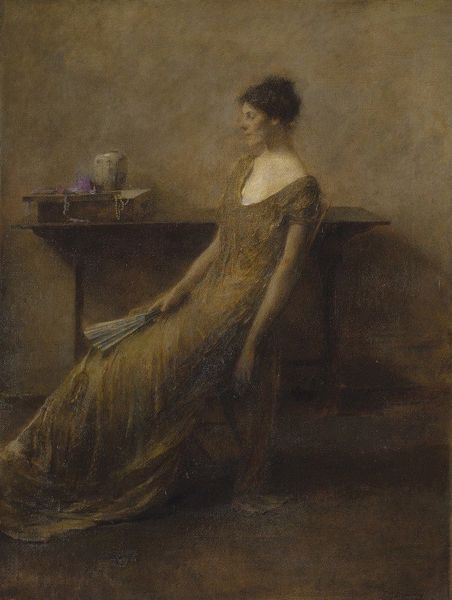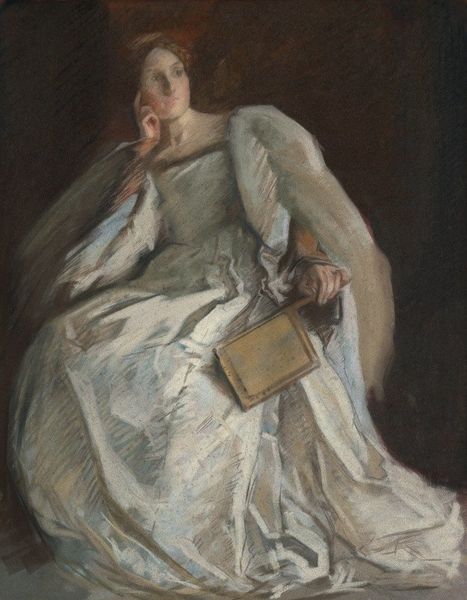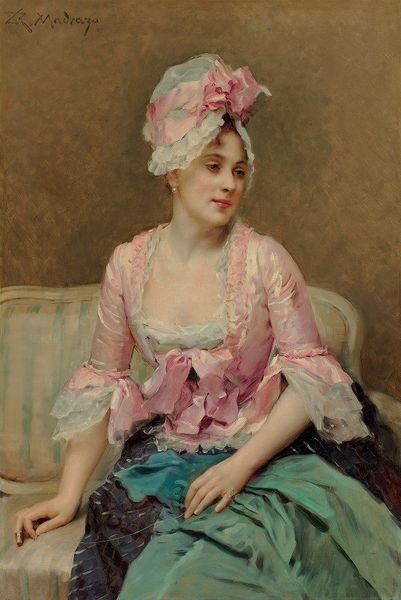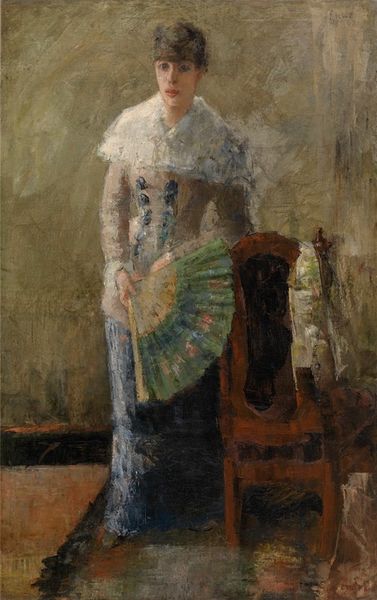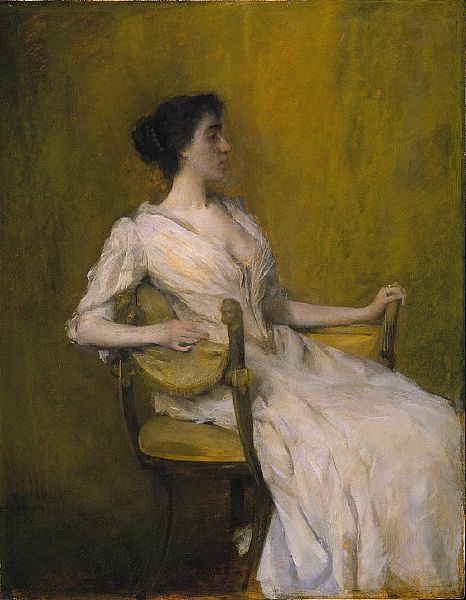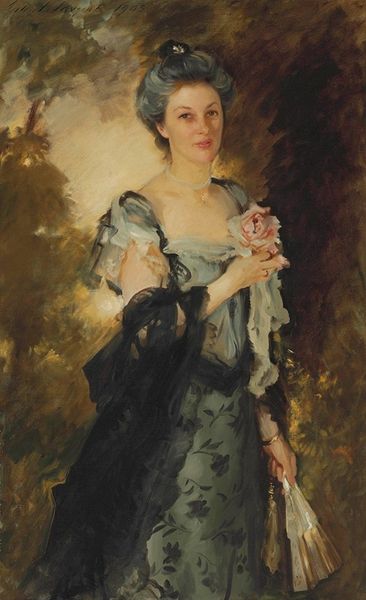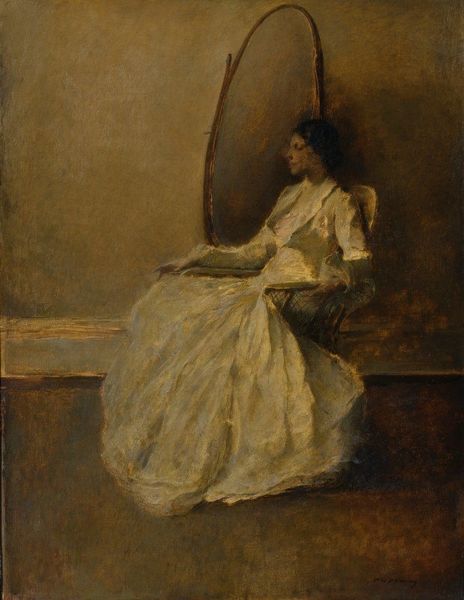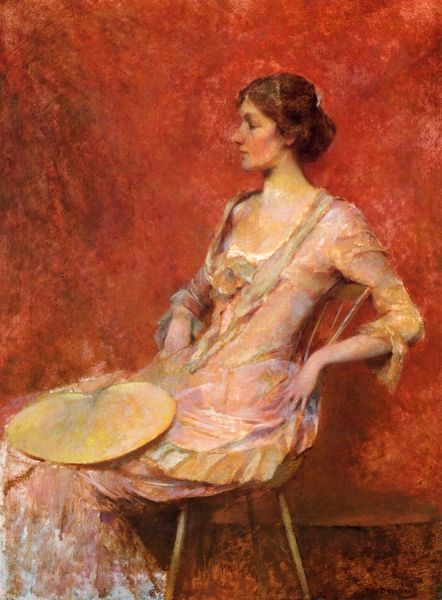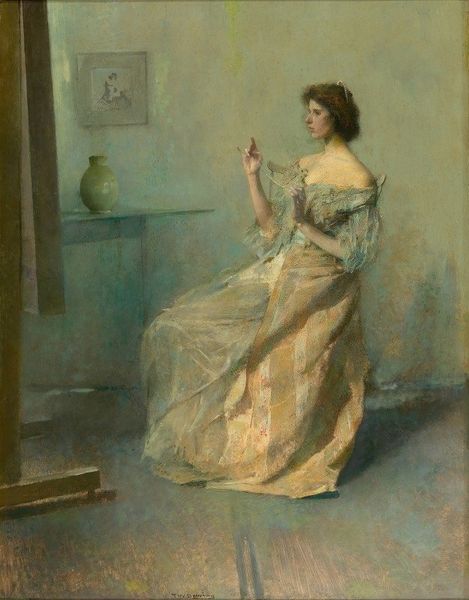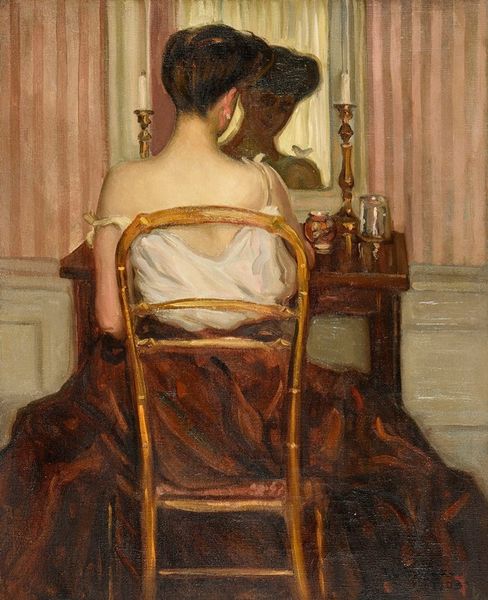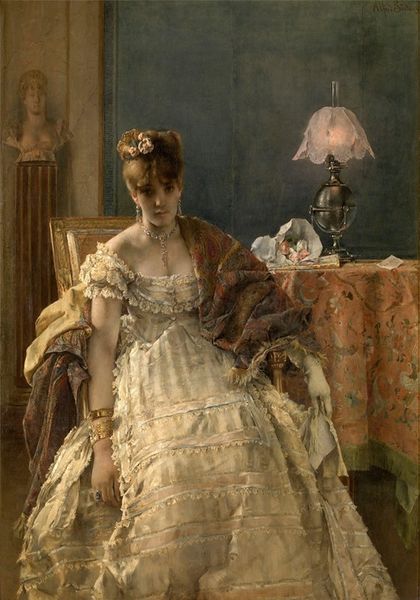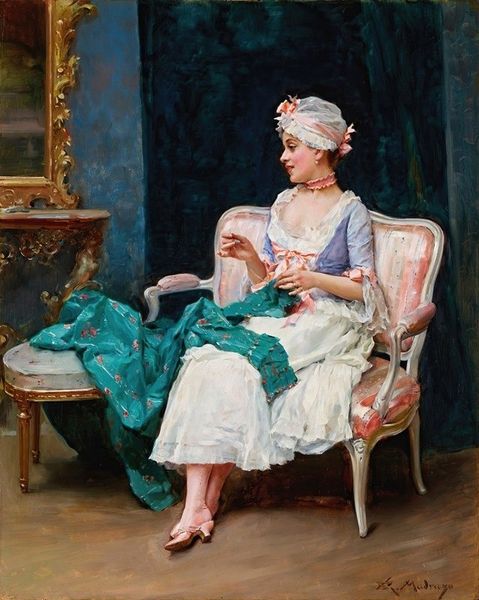
Dimensions: overall: 81.92 × 73.34 cm (32 1/4 × 28 7/8 in.)
Copyright: National Gallery of Art: CC0 1.0
Editor: Here we have Gretchen W. Rogers' "Five O'Clock," from around 1910, created with oil paint. It strikes me as quite an intimate scene. The woman seems lost in her own thoughts. What's your interpretation? Curator: I see it as an intimate scene, certainly, but also as a carefully constructed tableau reflecting the social rituals of the early 20th century. Rogers, like many artists of her time, was negotiating the space between traditional academic art and emerging modernism. Look at the way she depicts the woman’s dress – all those frills and light colors. Does that say anything to you about the sitter’s social standing and possible role? Editor: It feels like a commentary on the leisured class, perhaps? The elaborate hat especially seems to symbolize that. Curator: Precisely. This isn't just a portrait; it's a representation of a particular type of woman within a specific societal context. The act of taking tea, a relatively new commodity that reshaped social interactions globally, can be seen as a performance, subtly reinforcing existing social structures, while giving opportunities to form all-female alliances that empowered women inside private spaces. Considering these paintings through the lens of class and gender adds crucial layers of understanding, don't you think? Editor: I agree. I hadn't considered the historical context of the tea itself and the subtle political messages within the portrait. Curator: And thinking about these paintings in terms of identity and political statements helps us understand the painting as part of bigger picture in a historical context. Editor: It's fascinating how much history can be revealed through what seems like a simple scene! I see the artwork from a different angle now.
Comments
No comments
Be the first to comment and join the conversation on the ultimate creative platform.
